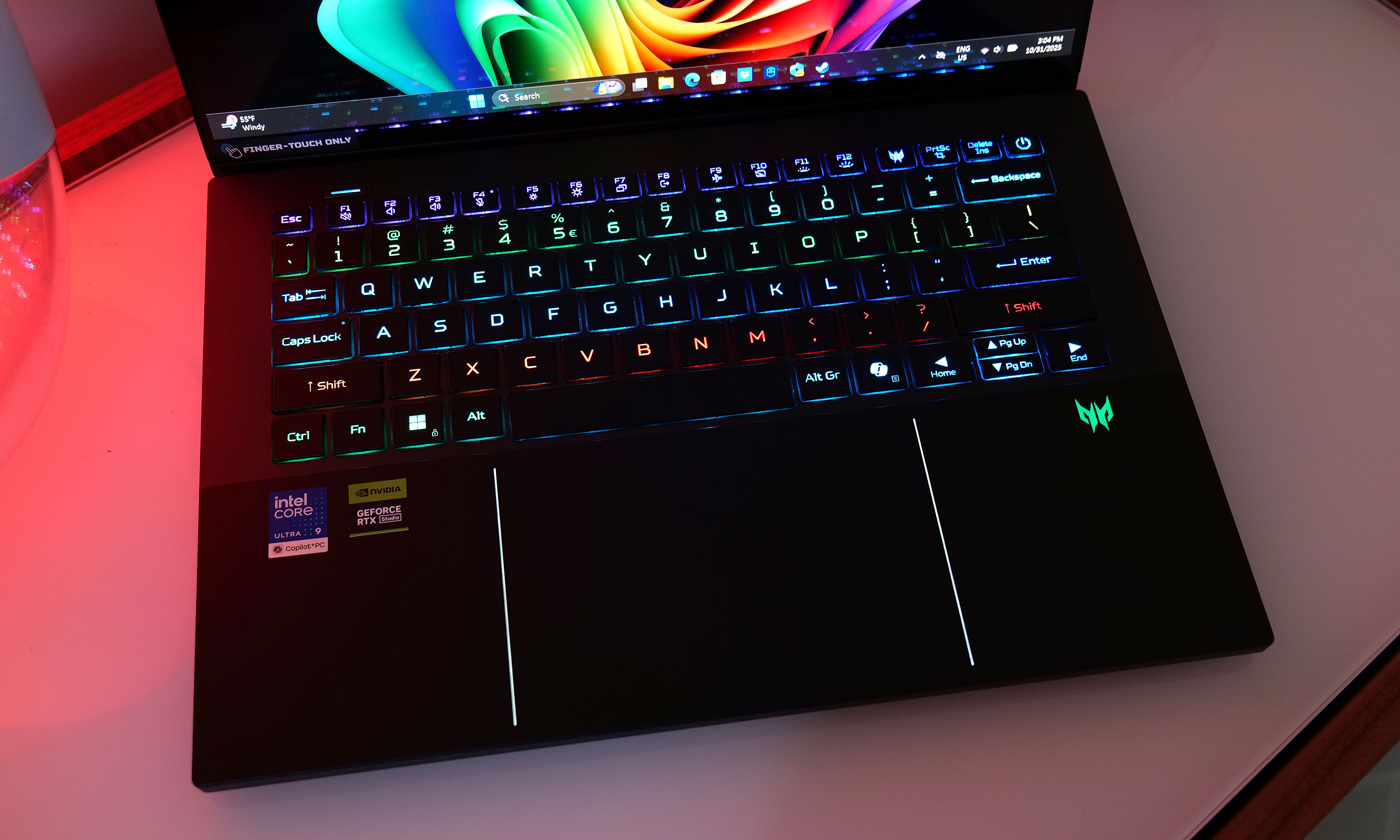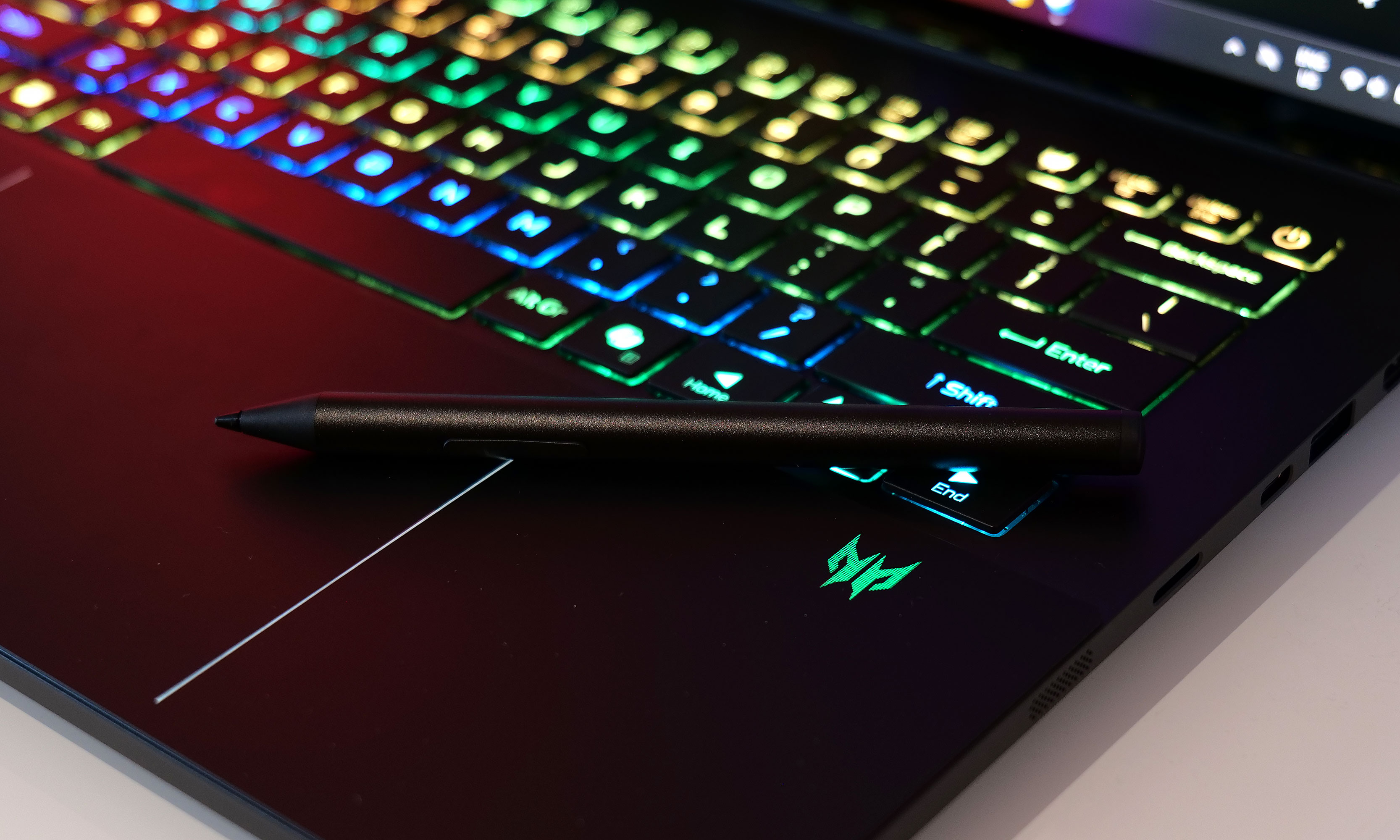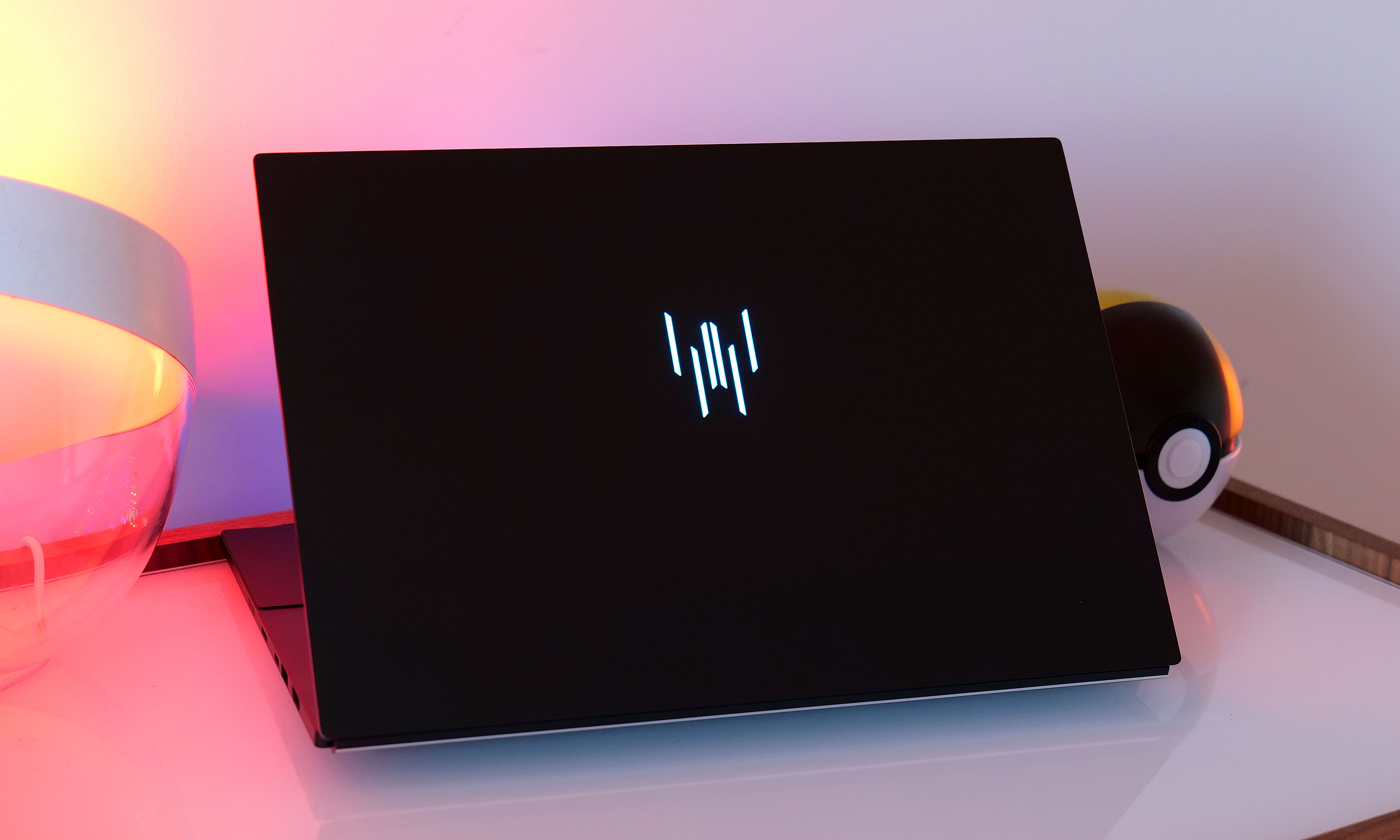Plenty of companies have promised to produce a gaming laptop that could be upgraded over time. If we’re honest, nobody has managed to properly deliver on that pledge until now, as Framework launches a meaningful CPU and GPU upgrade for the Laptop 16. Almost two years after the machine first went on sale, you can now swap out its discrete Radeon RX 7700S for NVIDIA’s GeForce RTX 5070. If the company deserves a standing ovation for that feat, then it gets an extra prize for bringing an NVIDIA GPU to AMD’s hinterland.
Hardware
Framework’s late-2025 upgrade for the laptop is arguably more important than every product it’s released since its very first. It’s the first chance for users (of any laptop, really) to swap out or add a discrete GPU to an existing machine. If you bought the first-generation model, you could have relied on the integrated graphics, or equipped it with a discrete Radeon RX 7700S. Now, you get the option to buy NVIDIA’s GeForce RTX 5070 with 8GB DDR7 RAM which you can add to the chassis yourself. The company has also repackaged the existing Radeon RX 7700S with the promise of less fan noise and better thermal performance than the previous model.
The new GPU pulls some of the focus away from the new mainboards, which are equipped with a choice of AMD’s Ryzen AI 7 350 or Ryzen AI 9 HZ 370, both of which promise to deliver 45W TDP. As before, you can equip the board with up to 86GB RAM, one or two SSDs, and your pick of ports via the six expansion card slots housed in the chassis.
If you’re buying the laptop new, you’ll get a raft of smaller upgrades, starting with a new 165Hz, 2,560 x 1,600 panel which supports NVIDIA G-Sync. Plus, a new top cover, improved keyboard, number pad, webcam, Wi-Fi 7 support and an upgraded 240W power adapter. Sadly, I can’t talk about these as I was testing the upgrade from the 2024 model which just included the new mainboard and GPU module.
Framework did listen to gripes about that rear-slung USB-C port which previously didn’t support charging. It was an omission that severely vexed my colleague Devindra Hardawar in his review of the original machine. But now, if you splurge for the RTX 5070, you can now use the rear port in the way that most people would intend. (If you’re unfamiliar, the Laptop 16’s discrete GPUs are packaged in self-contained “Expansion Modules” that go into the back of the chassis. The Radeon version could only be used for accessories and/or connecting additional displays.)
Rounding out the changes is Framework’s continual promise that it’s improved the cooling situation. The thermal paste has been switched out for Honeywell PTM, there’s a new, redesigned fan geometry and tweaked pipes for better airflow. And, look, I don’t want to ding Framework for failing to deliver on one promise when it’s kept so many others. But if you’ve followed the company for any length of time, you already know what I’m gonna say in the In-use section.
The obligatory AMD port compromise
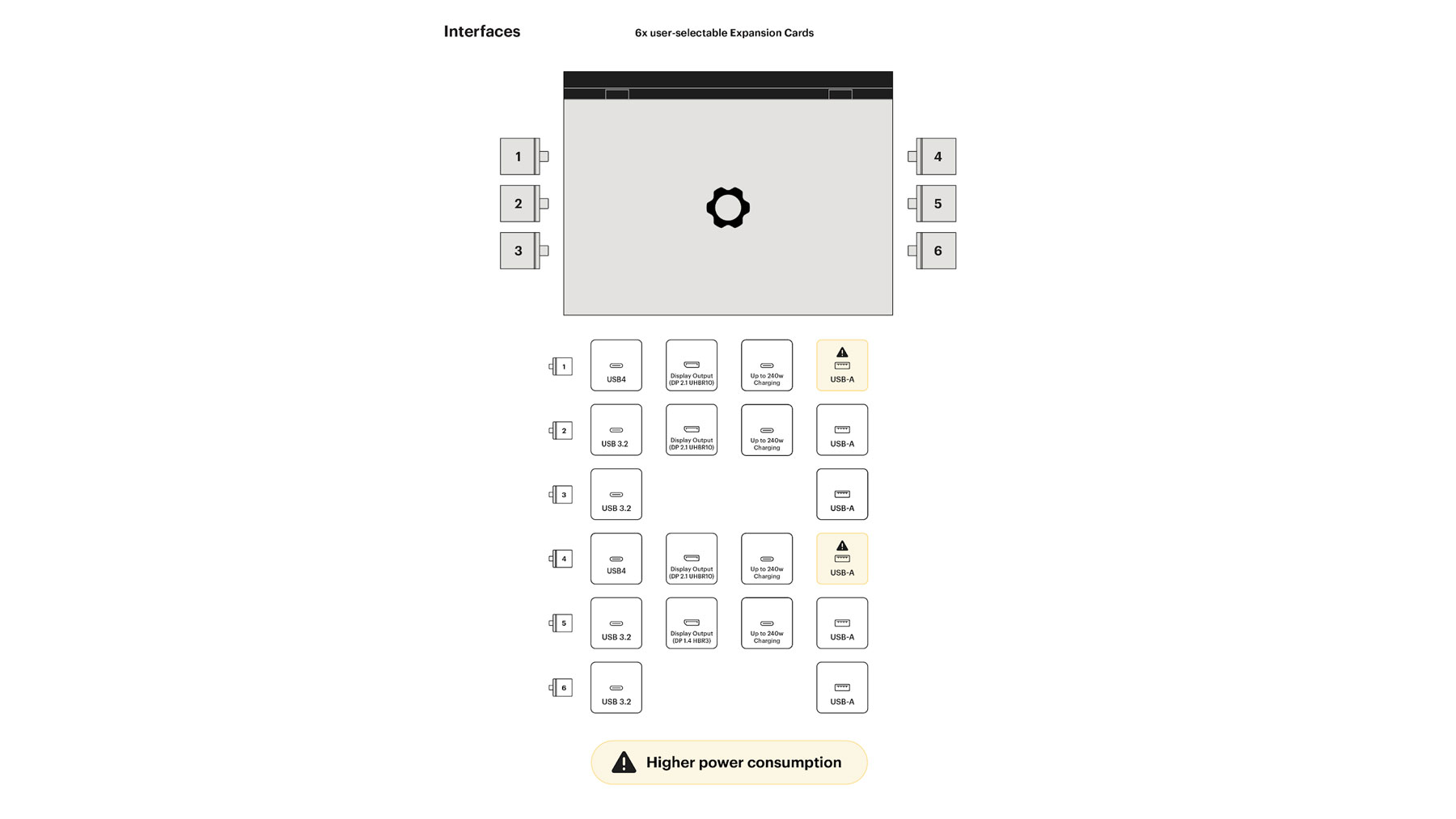
As is custom whenever discussing an AMD-toting Framework machine, you’ll need to memorize the diagram of which expansion card slots will work with which devices. We’re not going to ding Framework for an issue present in all AMD hardware, and the only reason it’s noticeable here is that you have the choice of which ports to use for what. You don’t have the sort of universal port flexibility that you might otherwise be expecting.
Installation
Laptop 16 is bigger and more complex than its smaller siblings, but that doesn’t mean it’s any harder to maintain. The company’s iFixit-style guides hold your hand so well that popping the mid plate off should feel as natural as breathing. And you get a real sense of how well the components are laid out when you’re asked to take them all apart and put them back together. The company says replacing the mainboard and graphics module should take you an hour, which is far too generous. It took me about 22 minutes to get everything swapped in and set up, to the point where I think installing the new drivers was more laborious than this.
I can’t stress enough how much of a feat it is to have a modular, upgradeable gaming laptop that offers you the chance to leap a generation. Being able to pull out a two-year-old Radeon to swap in a fresh RTX is the stuff of dreams (for some people, at least). Imagine how long it’ll be possible to keep this machine going if this type of bi-annual upgrade cycle continues. This isn’t a particularly difficult process, making it easy enough for those folks who would otherwise blanch at the idea.
In-use
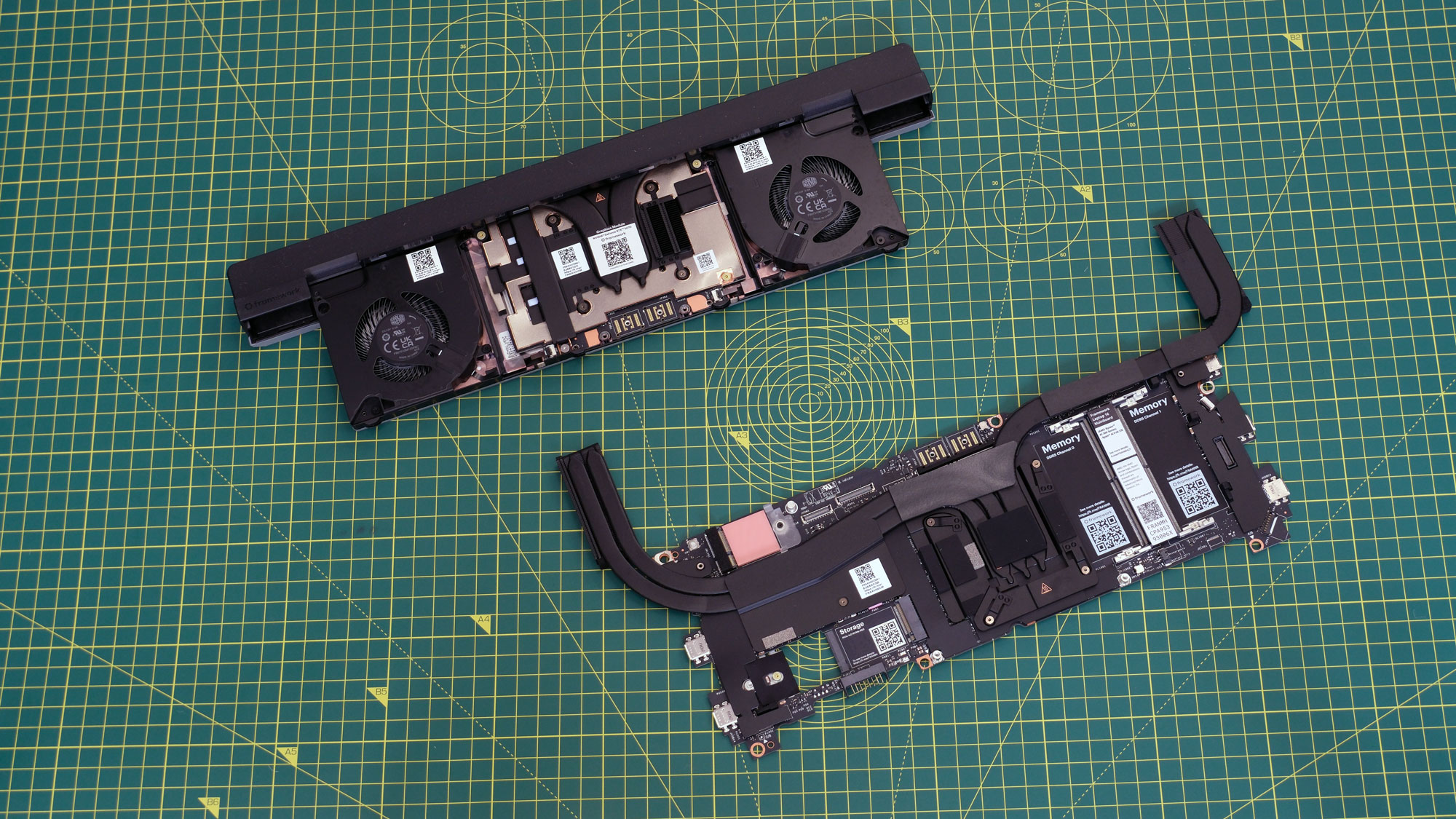
Of course, strapping such a powerful chip and graphics [INAUDIBLE DUE TO FAN NOISE] lead to issues. As discrete components, both the mainboard and expansion module need their own self-contained cooling. That’s never going to be as efficient as a holistically designed laptop. When you’re not taxing the machine, it’s not an issue at all, it’s only when you use it for its intended purpose that it becomes a serious problem. If you want to play games with this thing, get headphones or put the subtitles on, and don’t even think about using this in public. Did… did you hear that? CAN YOU HEAR ME? I SAID… AS DISCRETE COMPONENTS…
And that’s before we get to the heat that this thing kicks out. I’ve got my unit on a stand with about four inches of clearance from the desk. I put my hand underneath the chassis to feel how warm it was getting and it was enough to make me never want to put this on my lap, ever.
It’s a shame the noise and heat is such a bear as it’s a machine with sufficient grunt to impress many a jaded enthusiast. I set Cyberpunk 2077 to the highest settings I could (Ray Tracing: Overdrive) on 1080p, and it was able to comfortably produce 140 fps. Setting it to the defaults (Ray Tracing: Low, but the resolution set to the display’s maximum) it was able to crank out 182 fps.
You’ll find similarly-impressive performance if you use the Laptop 16 more for productivity than gaming. It compressed a 38GB 4K video file down to an 8GB HD mp4 in 28 minutes and 29 seconds. Using LM Studio, I was able to run Google’s Gemma 3 27B model with what I’d call fairly decent performance. Certainly, the chatbot wasn’t responding as quickly as Gemini would online, but it was hardly stuttering. I’d say that the performance here is more or less what you’d expect from the specs, with the one downside being that godawful fan noise.
Pricing
If you buy a new Laptop 16 pre-built from Framework, the Ryzen AI 7 configuration starts at $1,500, the AI 9 at $1,800. Add in the RTX 5070 and you can add another $699 to that price, which is the same cost as if you buy the GPU standalone as an upgrade. Or, if money’s tight, you could buy the new machine now and then add in the 5070 whenever you’d like — that’s the benefit of modularity.
It should be obvious you can get laptops with these sorts of components for less if you look elsewhere. In the run-up to the holiday season, I’ve seen machines — such as HP’s Omen Max — offer a Ryzen AI 7 and an RTX 5070 Ti for under $2,000. But here you’re not just buying a laptop, you’re buying into Framework’s broader ethos. You’ll get the fastest machine it can sell you right now, plus the ability to cheaply swap out to the next big thing in a couple years’ time without the cost of buying a new machine.
As I said back when reviewing the Ryzen AI 300 upgrades for the Laptop 13 earlier this year, Framework is well placed to take advantage of the world’s political situation. If the price of a whole new laptop skyrockets, then you can at least make a saving by just replacing what you need.
Wrap-up
I wonder if “Should you get one?” is the best question to ask and answer given the singular furrow Framework is ploughing. If you want a powerful laptop where every part can be replaced or upgraded, you don’t really have a serious alternative. Laptop 16’s natural target market is professionals and enthusiasts who value modularity and longevity over everything else. These new components give you enough power to play games, run AI models locally and whatever other demanding tasks you’ll throw at it.
As for everyone else, it’s a question of how willing you are to accept the heat, the noise and the slightly agricultural aesthetics. After all, this machine isn’t the sort of gadget you’ll be looking to move on in a few years’ time, it’ll be one you’re committing to for a long while.
This article originally appeared on Engadget at https://www.engadget.com/computing/laptops/framework-laptop-16-2025-upgrade-review-the-rtx-5070-is-the-star-160000464.html?src=rss
